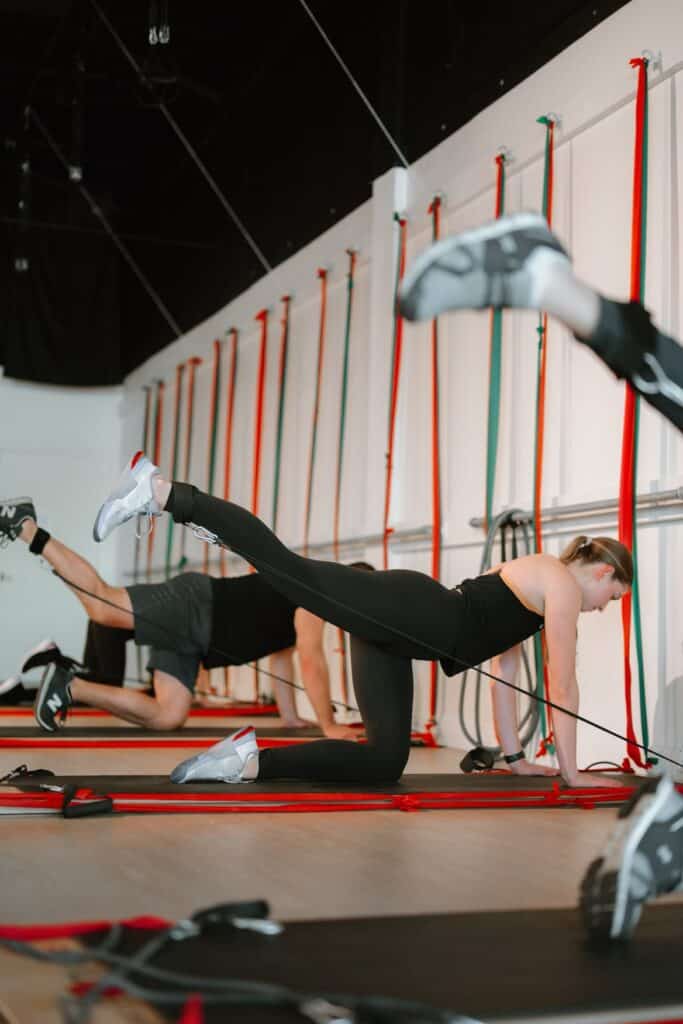Are you wearing the right shoes for your workout?

After the holidays, a lot of people come to class sporting new shoes. Our clients vary on their favorite sneaker brands but we noticed the majority prefer Brooks, Nike or Adidas, and others like the newer brands like Hoka, OnCloud and NOBULL. Looking cute in your new shoes is of course important, but what’s more important is if your new kicks are right for your workout.
The right shoe can make or break your workout. An ill-fitting shoe can cause pain, injury and even frustration during your workout. Many of us have experienced this but maybe don’t think our shoes are to blame. So, how do you ensure you’re wearing the right shoe for the right activity?
According to the American Podiatric Medical Association (APMA), if you participate in a certain sport or activity more than two times per week, you should wear a sport-specific shoe. For instance, if you are a runner, you should be wearing running shoes because they are designed to reduce the impact of each step you take and have extra cushion in certain parts of the shoe like the heel and forefoot. For weightlifting, you need a shoe that will keep your foot stable to be able to life the weights effectively. In this case, experts recommend a shoe that provides a flat and sturdy base like a low-profile cross trainer. These are often the top choice for gym goers because they can be worn for cardiovascular and endurance activities, too.
So, how about a group fitness class where you are doing a combination of things, like at Board30PV? If you’ve taken a class then you know there is a lot of variety with the trampoline, board and bands, and the workout may include lateral movements, lunges, toning, balance moves, and more. A light-weight pair of cross trainers with ankle and arch support are recommended for this type of activity. You don’t want to risk getting injured and have to take time away from your workout routine.
If you’re thinking, I have the right shoes, but when should I replace them? You’re going to want to change them periodically to avoid losing support or cushion where it matters most during physical activity – even before they start to show wear and tear. Your body may also signal to you that it’s time to go shoe shopping if you start to feel pain or aches in your feet, shins, legs or back. It’s not guaranteed to be the shoes, but they could be a culprit.
There are speciality athletic shoe stores in town that will measure your foot and even watch your gait to help determine the best shoe based on those favorites and your physical activity. If you’re an avid runner, experts suggest replacing your shoes every 300-500 miles run. If you don’t hit the pavement as much as that, but work out most days, they say to consider changing every six months. And if you only workout a few times a week – change them annually.
One tip to extend the life of your workout shoes, is to buy a casual pair of sneakers to wear when you’re out and about doing things that aren’t true exercise, but that might require good support. This will prevent additional wear and tear and help your workout shoes last a little longer and save you a few bucks.
Tell us in the comments what’s your go-to workout shoe brand.

So true! I’ve injured myself in worn out shoes I should have replaced. I was hooked on OnClouds for a long time but my new faves are hokas.
This is such an important reminder and one that I needed to hear today Thank you for always providing timely and relevant content